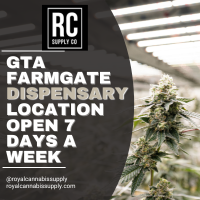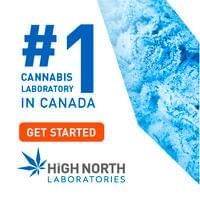Many in the industry are supportive of the recent announcement from the OCS that it will be testing some cannabis flower products that come through its central distribution warehouse beginning in January 2024. But some say the provincial buyer has also contributed to the problem it is now trying to solve.
Beginning in the new year, the provincial cannabis wholesaler will be selecting some high-THC cultivars coming into its warehouse for secondary testing. Any products with secondary testing results inconsistent with the THC levels posted on their label will be subject to further scrutiny, including a potential return-to-vendor for re-labelling.
While not all are happy with the announcement, many say it’s a needed step to begin to bring the issue of THC inflation under control. However, a few argue there’s a bit of irony that a provincial agency that has enforced a high THC narrative is now going to punish producers who are leaning into that category, no matter how accurately or not.
“The fact that these large corporations like the OCS were those pushing for the high THC category and accepting these finished THC COAs was a major part of the problem.”
Rick Moriarity, High North Laboratories
Walker Patton, the head of corporate development at Woody Nelson, a small producer located in Nelson, BC, that has products for sale in Ontario, says he expects this policy will change how some labs are testing cannabis products.
“In our opinion, the biggest challenge to having potency numbers that folks can rely on is the lack of a standardized methodology for testing. While that isn’t exactly what the OCS has done here, it might still have the same effect. I wouldn’t be surprised to see some of the labs known for more generous results adopting Sigma’s methodology to avoid a potential rejection of product.”
Sigma Analytical Services is the testing lab the OCS has selected for this program.
Rob O’Brien, the CEO and CSO at Supra Research and Development, another analytical lab that offers testing services for the cannabis sector, also says he sees the OCS’ new testing program as a step in the right direction and something he thinks other provincial cannabis agencies should be taking on.
“Every provincial distribution centre should be accountable for what they are selling,” says O’Brien. “They should make sure that the product they are selling matches what’s on the label. It’s as simple as that. If the producers aren’t doing that, then the provinces selling those products need to ensure they are.”
O’Brien, located in BC, is no stranger to the field of cannabinoid testing and the specific issue of inflated label claims, especially for THC on dried cannabis flower products. In early 2023, he shared his own independent testing results showing inaccurate labelling on dozens of products he purchased from the BC Cannabis Store.
He says he expects to release a new round of results from even more testing very soon that will shed even more light on the issue. Those results will be shared with all relevant provincial cannabis sellers and agencies, including the OCS.
While some have criticized the OCS’ use of an acceptable variance between label claim and testing results of +/-15%*, O’Brien says he thinks this is a reasonable, if small, window. He has used a 25% allowance for variability in his own testing.
*15% of label claim, not 15 percentage points.
“If there are products that are significantly out of label claims,” he adds, “those products should be recalled, and the provincial distribution networks should be fined. That would help us get away from this labelling issue.
“I think it’s a little tight, but it’s fair enough. Any of these products should come within 15% of the label claim.”
While the OCS is simply requiring any failed products to be relabelled by the producer, O’Brien says he would like to see these products formally recalled, and even see producers held accountable if they have approved the products for sale.
“If there’s a conspiracy to commit fraud and the manufacturer is knowingly putting a wrong number on a product—so the customer buys that product—and the middle man is aware as well and not doing something, then they’re complicit, too.”
“If there’s a conspiracy to commit fraud and the manufacturer is knowingly putting a wrong number on a product—so the customer buys that product—and the middle man is aware as well and not doing something, then they’re complicit, too.”
Rob O’Brien, Supra Research and Development
Chris Crosbie, the founder and COO of Atlantic Cultivation in Newfoundland, which has products available for sale in Ontario, says he also supports the OCS’ testing program but shares similar concerns with variability in lab methodology as those held by Patton and Woody Nelson.
“My main concern is that labs have a wide degree of variance for potency results. To avoid the risk of the product not being accepted, I’m inclined to start using whichever lab they have selected to have the highest chance to be within the target THC range.”
“To avoid the risk of the product not being accepted, I’m inclined to start using whichever lab they have selected to have the highest chance to be within the target THC range.”
Chris Crosbie, Atlantic Cultivation
James Ouimet, the founder of Green Canna, a cannabis sourcing company in BC specializing in B2B sales of cannabis, says he thinks policing of THC levels is important but also thinks smaller companies may be unfairly punished for participating in a race for high THC they were forced into by provinces like Ontario, who often control what products will even be available for sale in their regions.
“I do not think this is a useful approach… It is important to address this issue and take appropriate measures to regulate THC levels in cannabis products; however, it would have been ideal if these changes had been implemented earlier when independent studies first started showing a drastic increase in THC percentages. Waiting until now to make these changes puts licensed producers and micros in a difficult position as they try to meet the high THC demands imposed by the provinces.”
Ouimet explains this is because of the trend by provincial buyers to put a greater emphasis on high-THC cannabis flower, often pushing well above the previous threshold of around +30% THC.
“The root of the problem, in my opinion, lies with the regulatory decisions made by the provinces,” continues Ouimet. “Instead of addressing the issue when it was first brought to light four years ago, provinces began only expecting cannabis flower with 20% THC or higher. This puts immense pressure on producers to increase the THC levels in their products.
“Consequently, the industry became solely focused on achieving high THC content, thus diminishing returns on quality flower within lower THC ranges. This leaves top-level players in the cannabis market, such as micro-cultivators, struggling to keep up logistically and financially. Even flowers with THC levels of 20-23% are facing challenges in getting accepted now.
“It is important to note that it’s the provinces, and not the producers, who make these decisions. Due to neglect, many LPs in the industry have resorted to bending the rules to meet the increasing demands set by the provinces. When you’re in the driver’s seat, it’s easy to blame the people in the back.”
Rick Moriarity, COO of High North Laboratories, says he thinks the program is a step in the right direction, but he also notes that this is an issue at least in part engendered by the OCS buyers seeking out high THC cultivars.
“From a lab’s point of view, I’m happy that OCS has acknowledged there’s an issue with THC inflation,” Moriarity tells stratCann.
“But the fact that these large corporations like the OCS were those pushing for the high THC category and accepting these finished THC COAs was a major part of the problem.”
He says the issue is something that Health Canada should be addressing by vetting or qualifying which labs cannabis producers can use. In place of that, he thinks OCS could take that approach instead of this current testing plan.
“It’s still a step in the right direction,” he emphasizes, “but I don’t see this having a big effect.”
Related Articles
![]()



